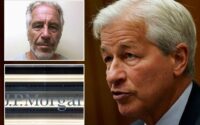Fed officials agreed on smaller December rate hike: minutes
All officials at the Federal Reserve’s Dec. 13-14 policy meeting agreed the central bank should slow the pace of its aggressive interest rate increases, allowing them to continue increasing the cost of credit to control inflation but in a gradual way meant to limit the risks to economic growth.
The minutes of the meeting, which were released on Wednesday, showed Chairman Jerome Powell and policymakers still focused on controlling the pace of price increases that threatened to run hotter than anticipated, and worried about any “misperception” in financial markets that their commitment to fighting inflation was in any way flagging.
But officials also acknowledged they had made “significant progress” over the past year in raising rates enough to bring inflation down. As a result, the central bank now needed to balance its fight against rising prices with the risks of slowing the economy too much and “potentially placing the largest burdens on the most vulnerable groups” through higher-than-necessary unemployment.

“Most participants emphasized the need to retain flexibility and optionality when moving policy to a more restrictive stance,” the minutes said, indicating officials may be prepared to scale back to quarter-percentage-point increases as of the Jan. 31-Feb. 1 meeting, but also remained open to an even higher than anticipated “terminal” rate if high inflation persists.
Indeed, the minutes put a premium on explaining that the decision to move to smaller rate increases should not be construed by investors or the public at large as a weakening of its commitment to bring inflation back to the central bank’s 2% target.
“Participants reaffirmed their strong commitment to returning inflation to the (Federal Open Market) Committee’s 2% objective,” the minutes said. “A number of participants emphasized that it would be important to clearly communicate that a slowing in the pace of rate increases was not an indication of any weakening of the Committee’s resolve to achieve its price stability goal.”
Policymakers approved a half-percentage-point point rate increase at last month’s meeting, a step back from the three-quarters-of-a-percentage-point hikes used through much of 2022.
“No participants anticipated that it would be appropriate to begin reducing the federal funds rate target in 2023,” the minutes said.
Still, “many participants highlighted” that the Fed was now balancing dual risks – of faster-than-expected inflation on one side versus the possibility of a policy overshoot that “could end up being more restrictive than necessary.”
“A slowing in the pace of rate increases at this meeting would better allow the Committee to assess the economy’s progress … as monetary policy approached a stance that was sufficiently restrictive.”


